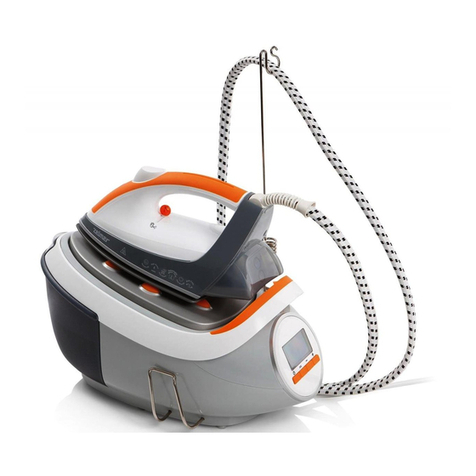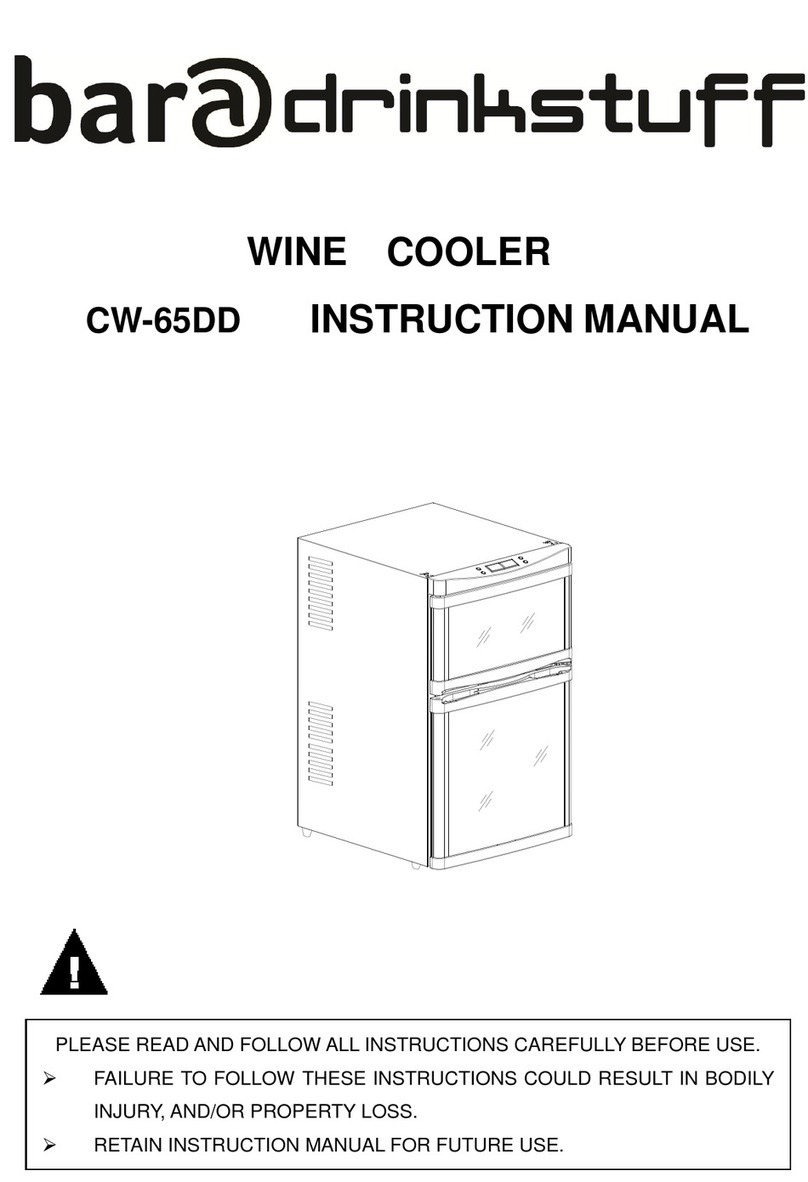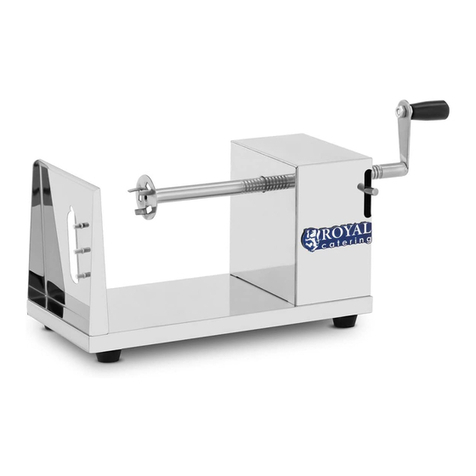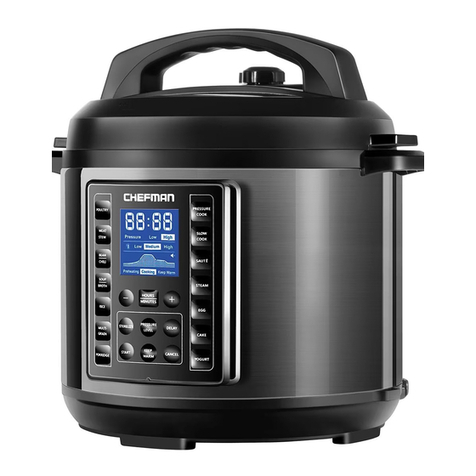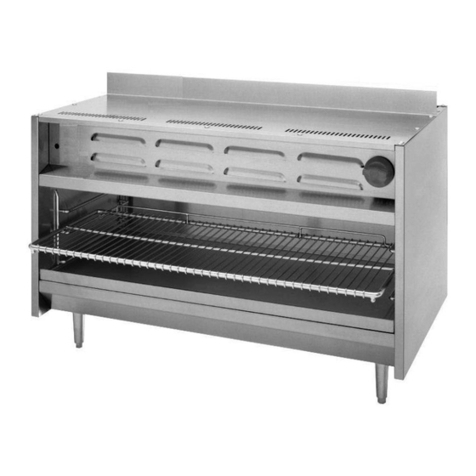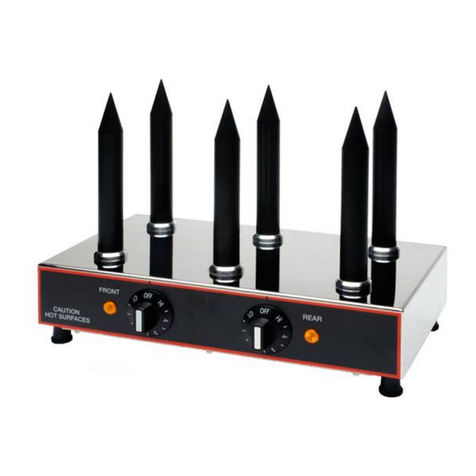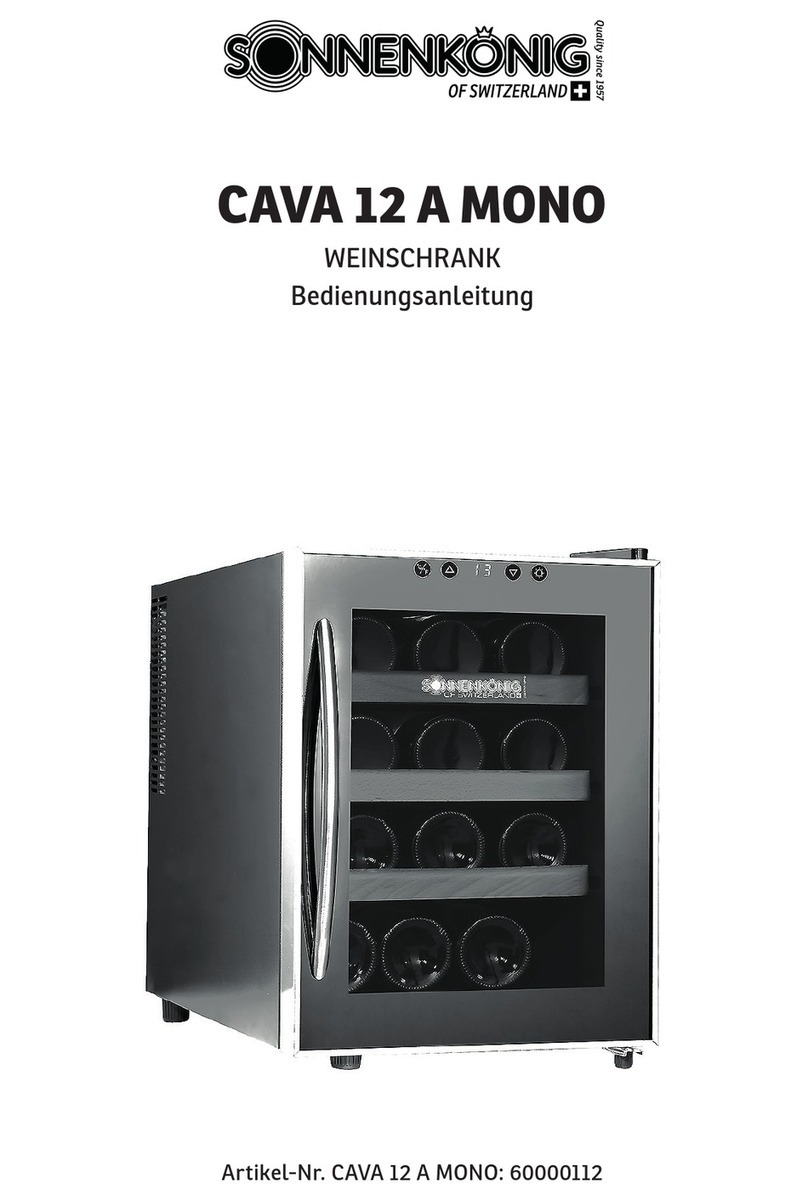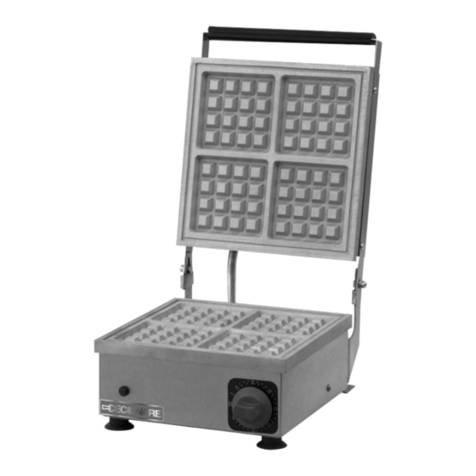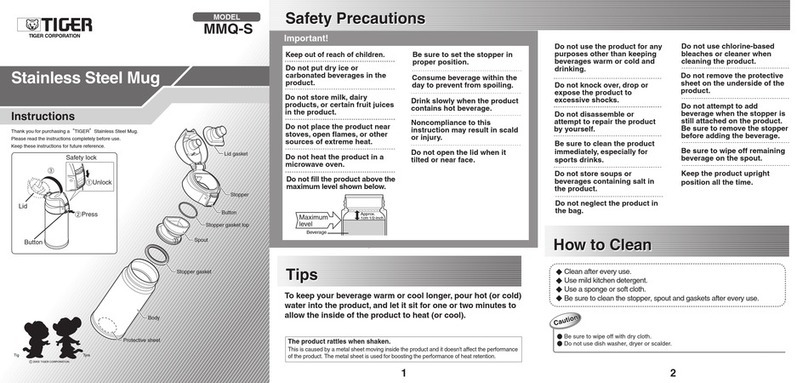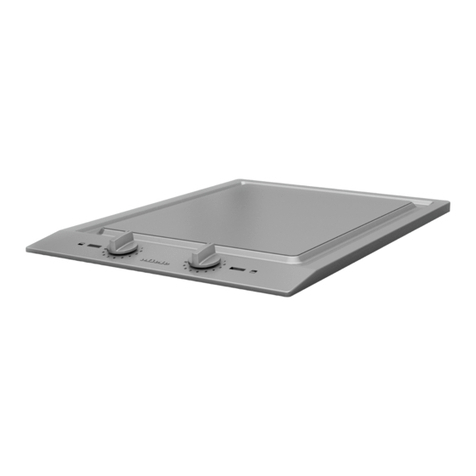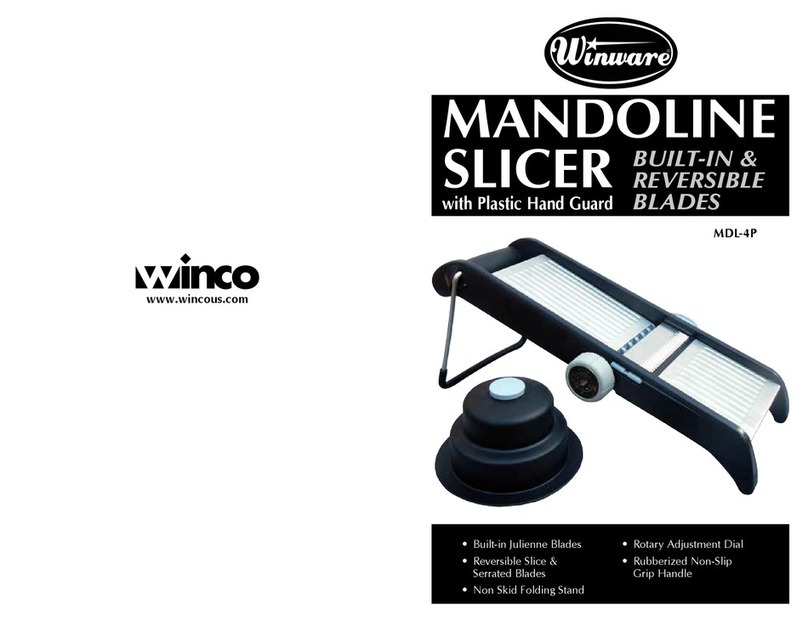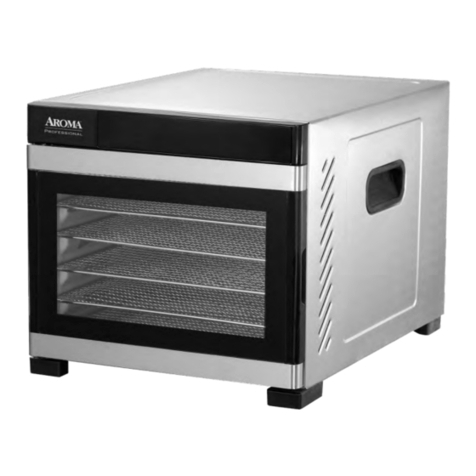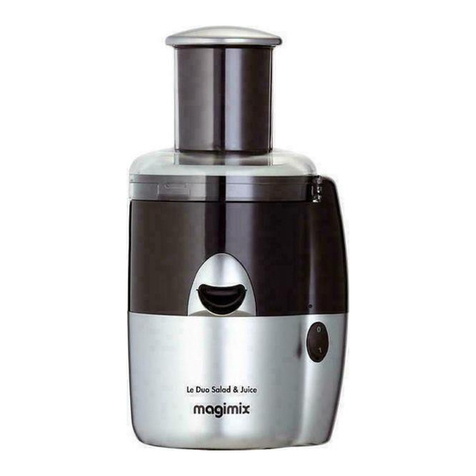Virat Inner Lid User manual

Congratulations !
You now own a marvelous kitchen aid, a pressure cooker of the finest quality. Chosen
no doubt, with a lot of care. Now let us show you how to get the best out of a good
product. All it takes is a little time, a little care.
Ordinary cooking takes place at the boiling point of water which is 100 dg. C. The
temperature at which water boils rises with an increase in pressure and this the principle
utilized by the pressure cooker to cook food at 122 dg. C. (1.055 kg/cm2). Since cooking is
done at higher temperature it is done much faster.
The higher temperature and faster cooking can be achieved by utilizing pressure has
been known for centuries but it was not known how to control the necessary pressure
safely for domestic use. This was achieved with the invention of the pressure cooker
and its introduction for general domestic use only a few years ago.
Thus science and technology have given house wives a simple way of improving the
quality of living which has not been available to earlier generations.
WHAT IS PRESSURE COOKING ?
Important safeguards
When using pressure cookers, basic safety precautions
should always be followed:
1. Read all instructions.
2. Before sealing the cooker it should be ensured that the
steam starts coming out of the vent tube of the cooker
freely.
3. The Aluminium Pressure Cooker body should not be
used for deep frying.
4. Do not touch surfaces. Use handles.
5. Close supervision is necessary when the pressure
cooker is used near children.
6. Do not place the pressure cooker in the heated oven.
7. Do not use the pressure cooker for other than the
intended use.
8. Extreme caution must be used when moving a pressure
cooker containing hot liquids.
9. This appliance cooks under pressure. Improper use may
result in scalding injury. Make certain unit is properly
closed before operating. See "operating instructions."
10. Do not fill the unit over 2/3 full. When cooking foods
that expand during cooking such as rise or dried
vegetables, do not fill the unit over half full. See "food
preparation instructions".
11. Food items which tend to foam, froth, sputter are
likely to block the pressure release device. Therefore,
while cooking such items, cooking instructions should
be strictly followed.
12. Always check the pressure release devices for
clogging before use.
13. Do not open the pressure cooker until the unit has
cooled and internal pressure has been reduced.
14. Do not use the pressure cooker for pressure frying
with oil.
Caution
Ensure use of genuine spare parts
Ensure that you use GENUINE SPARE PARTS
only and not imitation makes. Because these
imitation parts can cause costly damage to property
and serious injury to you. The manufacturer of this
pressure cooker is in no way liable or responsible
for any damage or injury caused by use of imitation
components in this cooker. It is advisable to get
your spare parts from known reliable dealers or
authorised service centers.
Know Your Pressure Cooker (Inner Lid Model)
1. Weight Valve (Pressure Regulator)
2. Lid Handle Bar
3. Lid Handle
4. Locking Loop
5. Main Handle Bracket
6. Safety valve
7. Body
8. Lid
9. Auxiliary Handle
10.Gasket
11.Vent Tube
Given below are the names of the parts and their position is shown in the previous page.
Do get to know their names and positions. You’ll find this very helpful in following the
instructions.
Inner Lid Model Cooker
14.In case you require any servicing or reconditioning, do not try to repair it yourself. Please take it to
the dealer nearest to you or write to the Company for advice/ directions.
15.We recommend that you take your cooker for checking once a year so as to ensure that the
Pressure Cooker is always in good working condition.
Don'ts
1.Never place a dry/ empty cooker on a heat source. If you ever use the Pressure Cooker without
any water it will get overheated and the gasket may get bunt. The cooker may also get damaged.
2.Your Pressure Cooker should not be filled with more than 2/3 of its capacity of solids or ½ its
capacity for liquids. Never overload it in anyway.
3.Never use a plate to cover the top separator while pressure cooking as it may block the vent tube
and the safety valve and prevent their proper functioning.
4.Never attempt to force open the lid of the cooker if there is pressure inside. To check whether
there is pressure inside, slightly lift the weight valve and if steam comes out, allow the cooker to cool for
some more time.
5.Always remove the weight valve first and then open the cooker.
6.Never tap the rim of the cooker body with servicing spoons, forks etc., as this may nick its seating
surface and allow steam to escape.
7.Never leave the cooker standing in water as the shine wilt dull.
8.Never use soda or hard abrasives to wash your cooker.
9.Never try to repair the metallic safety valve and do not substitute the metallic safety valve with
spurious
plugs, screws or washers, always buy a new genuine Metallic Safety Valve.
10.Always change metallic safety valve after every six months, even safety plug is not fused.

HOW TO START YOUR PRESSURE COOKER FOR THE FIRST TIME
1. Remove label. 7. In about 5 minutes you will hear a
2. Pour one glass of water into cooker slight hissing sound and the vent
body. Add one tea spoon fresh lime weight will give a whistle. (Note: If
juice. The addition of lime juice will there is no hissing sound after 5-7
ensure that the inside of the cooker minutes and steam is escaping
body remains clean. around the rim, it means the lid has
3. Fit lid into the cooker body. not been fitted properly. Do not touch
4. Lock the cooker making sure that lid at this stage or you will bum your
the cooker is sealed properly. fingers. Take cooker off stove and let it
5. Place cooker on stove ensuring cool for some time and refer to the
heat is at the maximum. problem shooting chart)
6. See that air is expelled from inside 8. Soon after vent weight will lift and
the cooker and clear and continuous steam will be forced out with loud
stream of steam comes out from the hissing sound from the vent tubeThis
vent tube. Fit vent weight on vent tube means that your cooker has COME
immediately with the help of a piece of TO FULL COOKING PRESSURE.
cloth or a pair of tongs. 9. Immediately afterwards take cooker
How To Fit Lid Into Cooker Body (Inner Lid Model)
1. If gasket is not properly fitted
into the lid curl
make sure it is properly fitted
as shown in picture alongside.
2. Place lid on cooker body so
lid handle and body handle are
together. (NOTE: Do not force
lid into cooker body.)
3. Turn lid handle so it is at a
right angle to body handle.
4. See that arrow on rim of
cooker body matches arrow on
lid's rim.
5. Slide the lid slightly away
from the body handle and tilt
that portion of the lid that has
the arrow on it into the mouth
of the pressure cooker
6. Insert lid under rim of cooker
body.
7. Place the lid handle bar on
top of the bracket groove.
Adjust lid handle bar on the
bracket lever until the gasket on
the lid rests in
direct contact with the
underneath of the rim of the
body of the pressure cooker.
comfortably,
8. Gently squeeze lid and body
handles together. And fasten
locking loop to catch on end of
the main handle bracket.
10. If necessary, to ensure lid
is properly seated press lid
and adjust.
1. Gently squeeze lid and body
handles together.
2. Unfasten locking loop from
end of main handle bracket
How to remove lid from the cooker body
(Inner lid cooker)
3. Tilt the lid down slightly into
the mouth of the cooker and
move the lid handle bar toward
the right hand side.
4. As the lid handle bar
approaches right angle position,
gently tilt up the position of the
lid away from the body handle
and remove the lid out of the
mouth of the pressure cooker.
ENSURE THAT YOU USE GENUINE SPARE
PARTS ONLY AND NOT IMITATION MAKES,
BECAUSE IMITATION PARTS MAY CAUSE
COSTLY DAMAGE TO PROPERTY AND
SERIOUS INJURY TO USER THE
MANUFACTURER OF THIS PRESSURE
COOKER IS IN NO WAY RESPONSIBLE FOR
ANY DAMAGE OR INJURY CAUSED BY USE OF
IMITATION COMPONENTS IN YOUR COOKER.
CAUTION
DO'S AND DON'TS
Please read following instructions very carefully to ensure that your Pressure Cooker is always kept in
good working condition.
DO'S
1.Always use the Pressure cooker with sufficient quantity of water. Pressure cooking is cooking
with steam, so there must always be water in the cooker to produce steam.
2.Always ensure that the vent tube is completely free of any blockage before closing the lid. this
can be easily done by looking through the vent tube and ensuring that the light is visible. Always keep the
vent tube clean and fixed tight.
3.The weight must always be placed on the cooker only when steam starts coming out steadily
through the vent tube.
4.Follow the proper cooking time of Pressure Cooker (Please refer to time chart)
5.When cooking dal in a 3 ltr, 4 ltr and 5 ltr pressure cooker/ always add a spoonful of any
cooking medium oil to the contents of the pressure cooker before commencement of cooking. Allow a few
minutes before closing the lid to avoid excess froth. When cooking liquid foods, add adequate quantity of
water.
6.In case the weight valve falls off during pressure cooking, please get the vent tube and weight
valve checked at the Pressure Cooker Dealer nearest to you.
7.lf steam escapes around the cover a new gasket should be fitted immediately. Otherwise the
cooker takes a longer time to come to pressure and it will require more heat to maintain this pressure.
Always buy genuine Gaskets.
8.Avoid damage to the sealing rim of the lid and body while cleaning or washing the cooker.
9.Always store the cooker with its lid open to prevent mustiness.
10.Handle the weight valve carefully. Keep it clean while in use.
11.Always keep the handles fully tightened when use.
12.Always buy genuine spare parts from the authorized Dealer nearest to you. Insist on a cash
memo when buying genuine spare parts.
